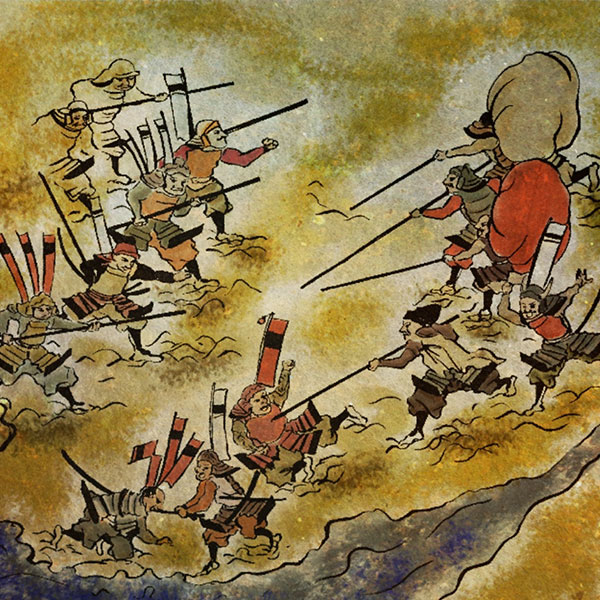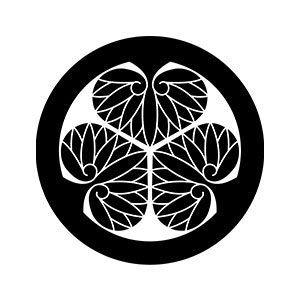- Kishu domainRuled by the Kii Tokugawa family, one of the three Tokugawa families.
- The Wakayama (Kishu) domain was a domain that ruled over Kii Province, the southern part of present-day Wakayama Prefecture and Mie Prefecture, and the southern part of Ise Province. The name Wakayama Domain was given after the restoration of the Taisho, and during the Edo period it was called ``Kishu Domain.'' Tokugawa Ieyasu's tenth son, second shogun Toku

Wakayama CastleWakayama City, Wakayama Prefecture
- spring
- summer
- autumn
- winter
- TOP
- Kansai
- Wakayama Prefecture
- Wakayama Castle
| Other name | Torabuse Castle, Takegaki Castle |
|---|---|
| castle construction | 1585 |
| address | 3 Ichibancho, Wakayama City, Wakayama Prefecture |
| telephone number | 073-422-8979 |
| Opening hours | 9:00-17:30 (Admission until 17:00) |
| closing day | December 29th-31st |
| Admission fee | Adults 410 yen / Elementary and junior high school students 200 yen |
- Access to Wakayama Castle
- Approximately 10 minutes walk from Wakayama City Station on the Nankai Main Line and Kisei Main Line.
HISTORYWakayama Castle was the residence of the Kishu Tokugawa clan.
Wakayama Castle is a flat castle located in Wakayama City, Wakayama Prefecture. It is also famous as the residence of the Kii Tokugawa family, and its castle tower remained there until it was burnt down in an American air raid in 1945. Currently, you can tour the reconstructed castle tower, Otemon Gate, Ichinohashi Bridge, etc. Let's unravel the history of Wakayama Castle.
- Wakayama Castle before the Edo period
- The land of Wakayama was ruled by the Saigashu, a group of gun mercenaries and local samurai, from around the 15th century. In 1585, Toyotomi Hideyoshi began the subjugation of Kishu, and his younger brother Hidenaga Toyotomi joined the war as vice general, and after subduing Kishu, he was rewarded with the two countries of Kii and Izumi. By order of Hideyoshi, Toyotomi Hidenaga built a castle on Mt. Torabuse, located at an altitude of 48.9 meters in the center of present-day Wakayama City. The person who served as the construction magistrate for the construction of the castle was Todo Takatora, who is famous as a master castle builder. Also, when the castle was completed, the place name that had been known as ``Wakayama'' at the time was changed to ``Wakayama.'' This castle built by Toyotomi Hidenaga was the predecessor of Wakayama Castle.
In 1586, Shigeharu Kuwayama was given 30,000 koku and became the castle owner. Shigeharu made some changes to the main keep, and in 1596 handed over the reins of the castle to his grandson, Kazuharu Kuwayama. When the Battle of Sekigahara occurred in 1600, Kazuharu Kuwayama sided with the eastern army and was once again given 20,000 koku in Kii Wakayama by the shogunate, but was soon transferred to the Yamato-Shinjo domain. Masu. After that, Yukinaga Asano, who also belonged to the Eastern Army, was given 376,000 koku and became the lord of the Kishu domain, and entered Wakayama Castle. Yukinaga Asano also built a clapboard castle tower, built a mansion on the site of the current Honmaru, Ninomaru, and Nishinomaru, and renovated the earthworks into stone walls.
In addition, they began developing the castle town, moving the current Otemon Gate from Okaguchi Gate to Ichi-no-bashi, and then developing the castle town using Honmachi-dori Street as the main street. In 1619, the Asano clan was transferred to the Hiroshima domain in place of Masanori Fukushima, who was transferred to Kii Wakayama, and Yorinobu, the tenth son of Tokugawa Ieyasu, entered Kii Wakayama for 555,000 koku. The Kishu Tokugawa family, one of the three Tokugawa families, was established in - Wakayama Castle in the Edo period
- Tokugawa Yorinobu, who entered Kishu Wakayama, received 5,000 kan of silver from his older brother, the second shogun Hidetada Tokugawa, and used this as capital to begin renovating the castle and expanding the castle town in 1621. did. It is recorded that the construction work was so large that the shogunate suspected him of rebellion. Throughout the Edo period, Wakayama Castle suffered many fires.
* In 1655, a fire broke out in a vassal's mansion adjacent to the Nishinomaru, and the fire spread to the Ninomaru and Nishinomaru.
* In 1813, a fire broke out in the inner part of the Nishinomaru Palace, and the Nishinomaru Palace was completely destroyed.
* In 1846, the main buildings of the main castle tower, including the large and small castle towers, were completely burnt down, excluding the palace, due to a lightning strike on the castle tower.
Major buildings have been destroyed by fire three times on record. When the castle tower was burnt down, special permission was granted to rebuild Wakayama Castle, as it was the residence of the Kii Tokugawa family, one of the three major Tokugawa families, and the large and small castle towers were rebuilt in 1850. - Wakayama Castle after the Meiji period
- After the Imperial Restoration and the establishment of the Meiji government, the Castle Abolition Order was issued in 1871, and castles all over Japan were abandoned all at once. Many buildings at Wakayama Castle have been dismantled or destroyed, including the Ninomaru Palace, which was relocated to Osaka Castle in 1885. In 1901, the entire area of Honmaru and Ninomaru was opened to the public as Wakayama Park. At this time, 11 buildings, including the castle tower, still exist, and they were designated as national treasures in 1935 under the old National Treasure Preservation Law.
However, all of these buildings were destroyed in 1945 by an American air raid (the Great Wakayama Air Raid). After the war, in 1957, the Okaguchi Gate and the earthen wall that followed it were designated as important cultural properties of the country, and the following year, in 1958, under the direction of Michio Fujioka, professor emeritus of the Tokyo Institute of Technology, The castle tower group was rebuilt using reinforced concrete.
The Otemon Gate and Ichinohashi Bridge, which had deteriorated and collapsed in 1983 and 1909, will be restored.
In 2006, restoration work on the Ohashi Corridor, which is said to have connected Ninomaru and Nishinomaru, began, and the castle was recognized as one of Japan's 100 Famous Castles (number 62) by the Japan Castle Association. Today's Wakayama Castle has a zoo, garden, azalea garden, etc. on its grounds, and has become one of Wakayama's leading tourist attractions.
Read about incidents related to Wakayama Castle
- Kishu conquestOda Nobunaga/Toyotomi Hideyoshi vs. Saiga/Negoro
- What do you imagine when you think of "Kiokuni" during the Sengoku period? Kii Province is part of present-day Wakayama Prefecture and Mie Prefecture, but it is full of famous tourist spots such as Mt. Koya and Kumano Sanzan. The Saigashu, famous as the strongest gun mercenary group in the Sengoku period, is also here.

History of the Kishu domain, whose domain was Wakayama Castle
| Domain office | Wakayama Castle |
|---|---|
| old area | Kiikuni |
| stone height | 555,000 koku |
| Fudai/Tozama | foreigner/relative |
| main lord | Asano family, Tokugawa family |
| Estimated population | 458,826 people (first year of the Meiji era) |













